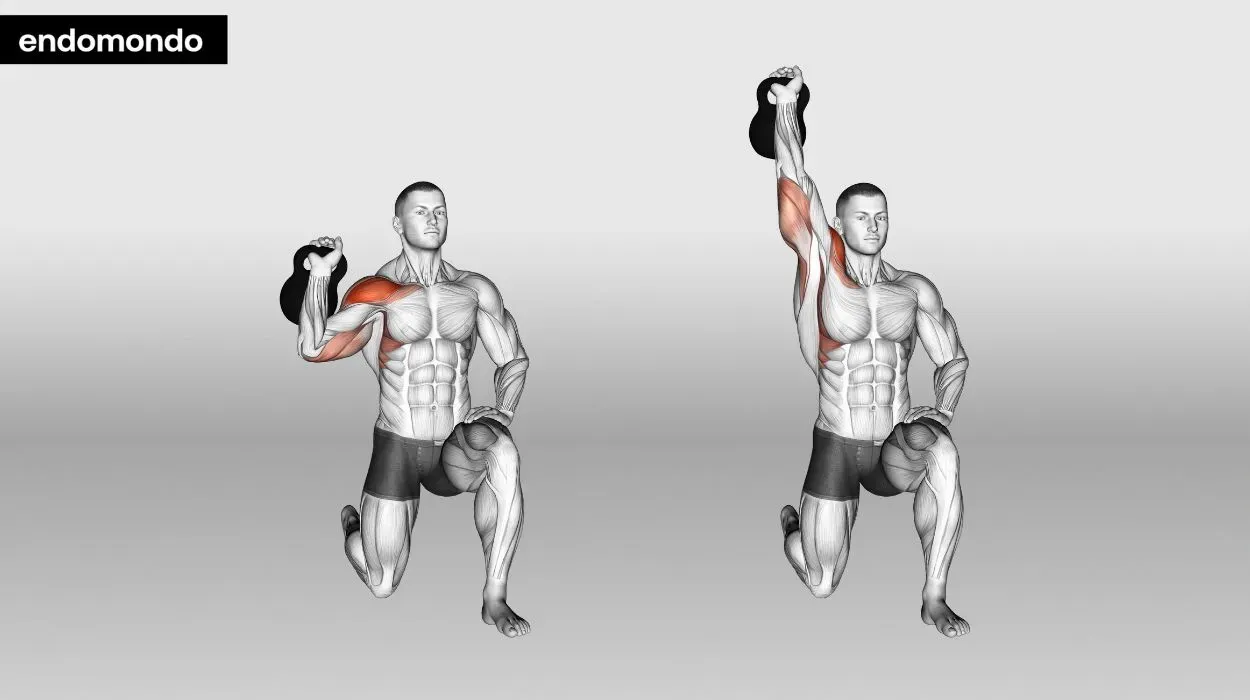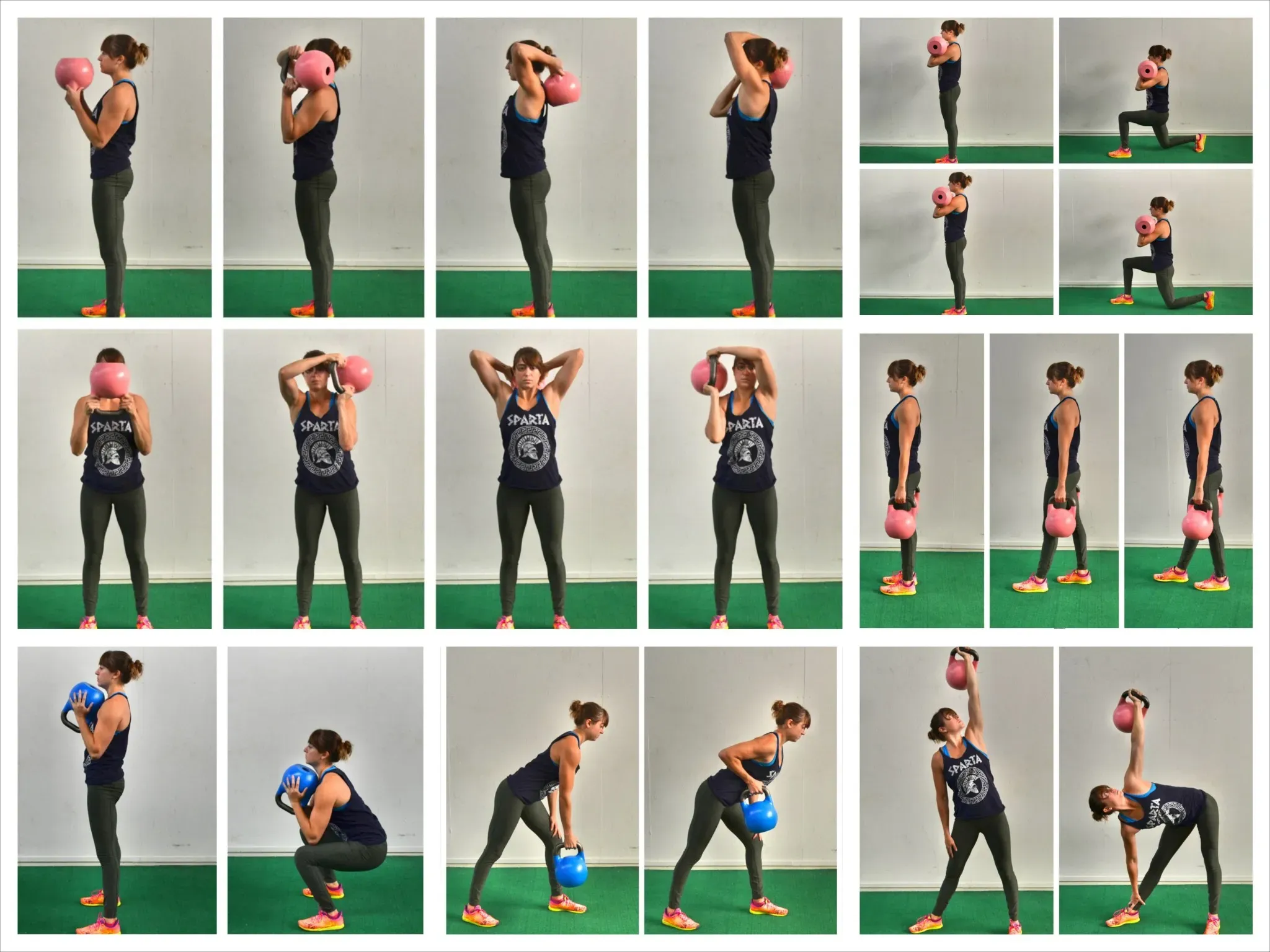Table of Contents
Let's be honest, who doesn't want stronger, more defined arms? You might immediately think of dumbbells or barbells, picturing endless sets of curls and extensions. But there's another tool in the shed that can seriously level up your arm game, often in ways you haven't considered: the kettlebell.
Beyond Biceps Curls: Why Kettlebells Hit Arms Differently

Beyond Biceps Curls: Why Kettlebells Hit Arms Differently
It's About Motion, Not Just Muscle Isolation
Look, everyone knows how to curl a dumbbell. You grab it, you lift, you lower. Simple. Effective for building the bicep peak, sure. But kettlebell arm work isn't just about flexing in the mirror. Kettlebells demand movement. When you swing, clean, or press a kettlebell, your arms aren't working alone. They're part of a chain, transferring force from your legs and core. This means your biceps and triceps are constantly stabilizing, accelerating, and decelerating the weight, often through multiple planes of motion. It's less about isolating a single muscle and more about teaching your arms to work efficiently within complex, real-world movements.
Grip Strength Gets a Serious Upgrade
That thick handle and offset center of mass on a kettlebell? They're not just for show. Holding onto a kettlebell, especially during dynamic lifts or when performing kettlebell arm raises overhead, forces your grip and forearm muscles into overdrive. Standard dumbbells often sit comfortably in your palm, but the kettlebell challenges your crushing and supporting grip constantly. This isn't just about looking like you can crush walnuts; a stronger grip translates to better performance in almost every other lift and daily activity. Your forearms will thank you, eventually.
- Kettlebells integrate arms into full-body movements.
- They demand constant stabilization from arm muscles.
- The offset weight challenges balance and control.
- Thick handles build serious grip strength.
- Training focuses on functional strength over pure isolation.
Building Resilient, Functional Arms
Because kettlebell training involves so much dynamic movement and stabilization, the strength you build in your arms is inherently more functional. You're not just making a muscle bigger; you're making it better at doing its job within the context of your body moving through space. Think about lifting groceries, throwing a ball, or even just carrying a heavy suitcase. These aren't bicep curls. They are complex actions requiring coordinated effort. Kettlebells train your arms to handle these demands, making them more resilient and less prone to those annoying tweaks and strains that come from having show muscles with no go muscles.
Specific Kettlebell Arm Raises and Other Key Exercises

Specific Kettlebell Arm Raises and Other Key Exercises
Specific Kettlebell Arm Raises and Other Key Exercises
Alright, so you get that kettlebells aren't just mini-barbells. Now, let's get down to the brass tacks: the actual moves. While "kettlebell arm raises" might sound simple, the truth is, kettlebell training for arms often involves compound movements that *include* arm work, rather than just isolating a single joint motion like a traditional raise. We're talking about presses that hammer your triceps and shoulders, rows that build serious bicep and back strength, and even dynamic moves that challenge your arms in ways you haven't felt before. Think of it less as just lifting the weight *with* your arms, and more about moving the weight *through space* using your whole body, with your arms playing a crucial role in the process.
Crafting Your Kettlebell Arm Raises Workout Routine

Crafting Your Kettlebell Arm Raises Workout Routine
Putting the Pieces Together
so you've got a bunch of cool kettlebell moves for your arms – presses, rows, cleans, maybe even some specific kettlebell arm raises if you're feeling fancy. But how do you actually build a workout out of them? You can't just randomly string them together and expect magic. Think of it like building a meal; you need a main course, some sides, maybe a little dessert. For your arm routine, that means picking a few key movements and arranging them logically. You could go for a full-body routine that *includes* arm-focused kettlebell work, or dedicate a session specifically to upper body with a heavy emphasis on those kettlebell exercises. The key is variety and progression – don't do the same thing every time, and try to challenge yourself a little more each week, whether that's with a heavier weight, more reps, or better form.
What's one exercise you're excited to try integrating into your routine first?
Getting Results: Rep Ranges and Benefits of Kettlebell Arm Training

Getting Results: Rep Ranges and Benefits of Kettlebell Arm Training
Finding Your Sweet Spot: Reps for Tone and Muscle
So, you're swinging the weight, feeling the burn, but how many times should you actually lift that cannonball with a handle? If your goal is building muscle and getting that toned look, the classic advice holds pretty true: aim for that 8 to 15 repetition range. This is where you're typically lifting a weight heavy enough to challenge your muscles significantly within that rep count, forcing them to adapt and grow. Going much lower leans more towards pure strength, and much higher becomes endurance work. For exercises like kettlebell arm raises (the pressing kind, anyway) or rows, hitting 10-12 solid, controlled reps is a good place to start. Don't just flail the weight; focus on feeling the muscle work through the entire movement. If you can easily crank out 15+ reps with perfect form, it's time for a heavier bell.
Beyond the Bicep Peak: Real-World Benefits
Let's face it, bigger arms are cool, but kettlebell training offers more than just aesthetics. Because these movements are often dynamic and involve multiple joints, you're building strength that actually translates outside the gym. That grip strength we talked about? It makes everything from carrying shopping bags to opening stubborn jars easier. The stability demanded during presses and cleans builds resilient shoulders and elbows, often neglected in isolation work. Plus, integrating your arms into bigger movements like cleans and presses improves your overall power and coordination. It's not just about looking strong; it's about *being* strong in a useful way. You'll find everyday tasks feel less like a struggle and more like, well, just tasks.
What's the most surprising place you've noticed your kettlebell training paying off?
Swinging Towards Stronger Arms: Wrapping It Up
So there you have it. Kettlebells aren't just for swings and squats, though those are great too. We've looked at how these cannonball-shaped weights can challenge your triceps and biceps with specific moves like presses and rows, and even combine forces in dynamic exercises. Building a routine with kettlebell arm raises and these other variations offers a different path to arm strength and definition than your standard gym machine circuit. It requires control, stability, and often works your grip and core harder than you might expect. Stick with it, focus on form, and you'll likely see results that go beyond just bigger arms, impacting your overall functional strength.